Significant increase of activity at Shishaldin volcano, fire-fountaining observed, Alaska
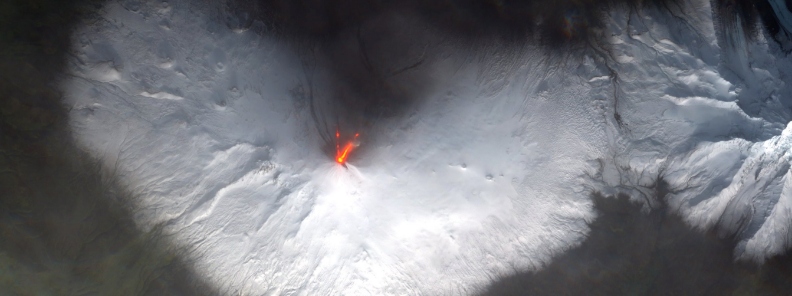
Activity at Shishaldin has increased significantly over the past day with fire-fountaining observed in web camera views throughout the evening and night, the Alaska Volcano Observatory (AVO) reported at 22:20 UTC on November 11, 2019.
Strongly elevated surface temperatures have been observed at the summit and along the flanks since yesterday afternoon. Minor to moderate ash emissions (up to 3.6 km / 12 000 feet a.m.s.l. drifting to the north) have been observed through web camera views as well as pilot reports.
Seismicity over the past day increased significantly. Seismic tremor has stabilized and remains high over the past 6 hours. Infrasound from Shishladin has been observed at stations in Sand Point.
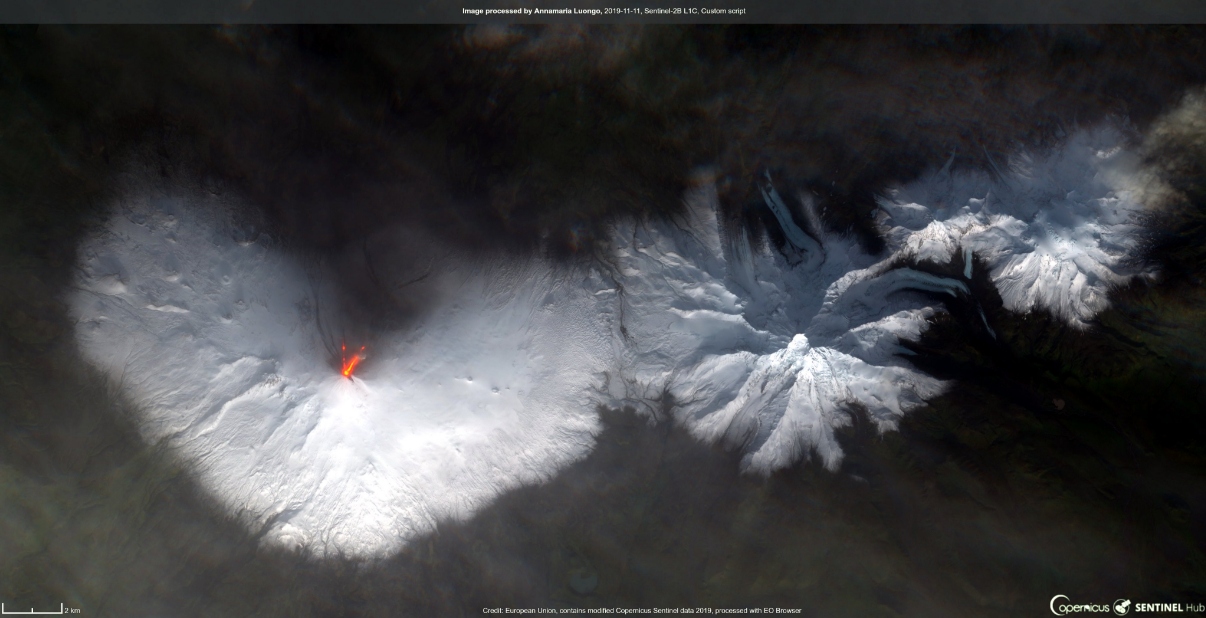
Shishaldin on November 11, 2019. Credit: ESA/Sentinel-2, Anamaria Luongo
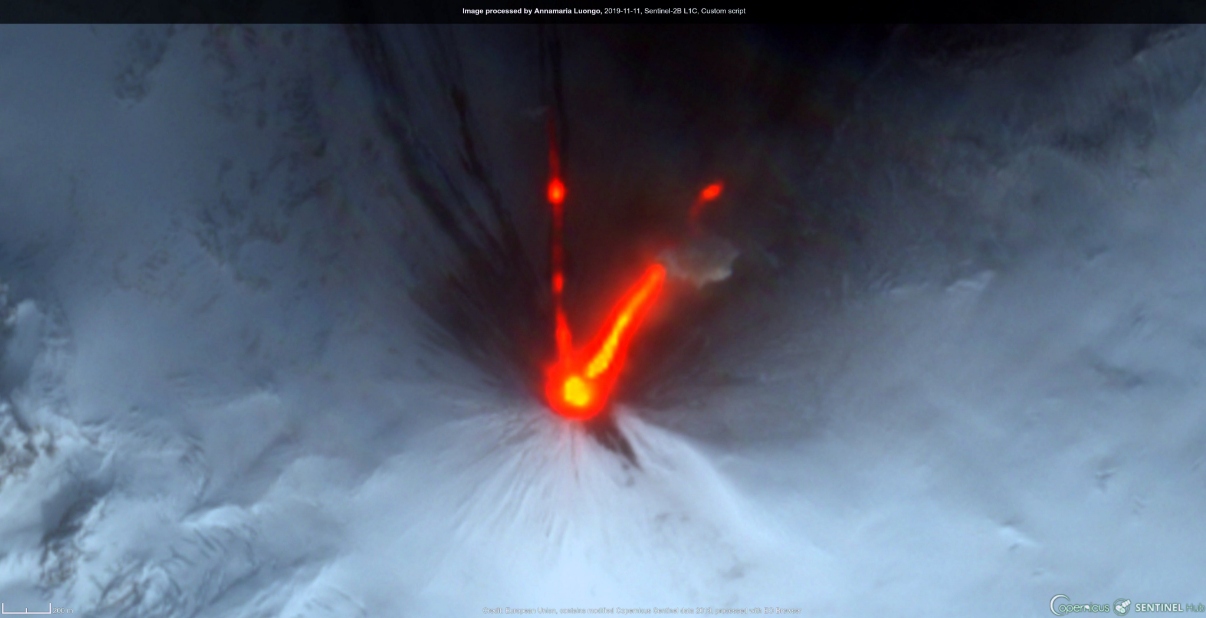
Shishaldin on November 11, 2019. Credit: ESA/Sentinel-2, Anamaria Luongo
According to data provided by the Anchorage VAAC, the main eruption took place at 19:45 UTC. Top of volcanic ash to 3.6 km (12 000 feet) a.s.l. was estimated from webcam views.
"Ample meteorological clouds are spreading northward obscuring volcano summit," the center In an advisory issued 02:10 UTC today.
"That said, there has been no independent detection of volcanic ash for several hours. Webcam imagery suggested a bit of smoke being emitted from the summit, but that too has faded. Believe volcanic ash has dissipated."
The current Volcano Alert Level is Watch, Aviation Color Code is Orange.
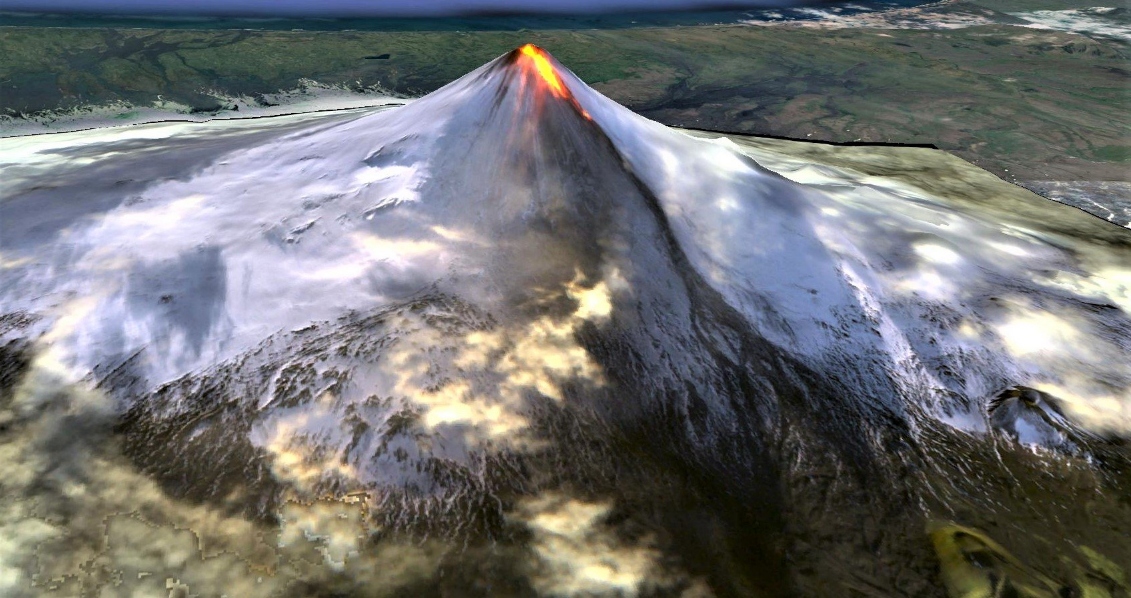
Shishaldin on November 1, 2019. Credit: ESA/Sentinel-2, Antonio Vecoli
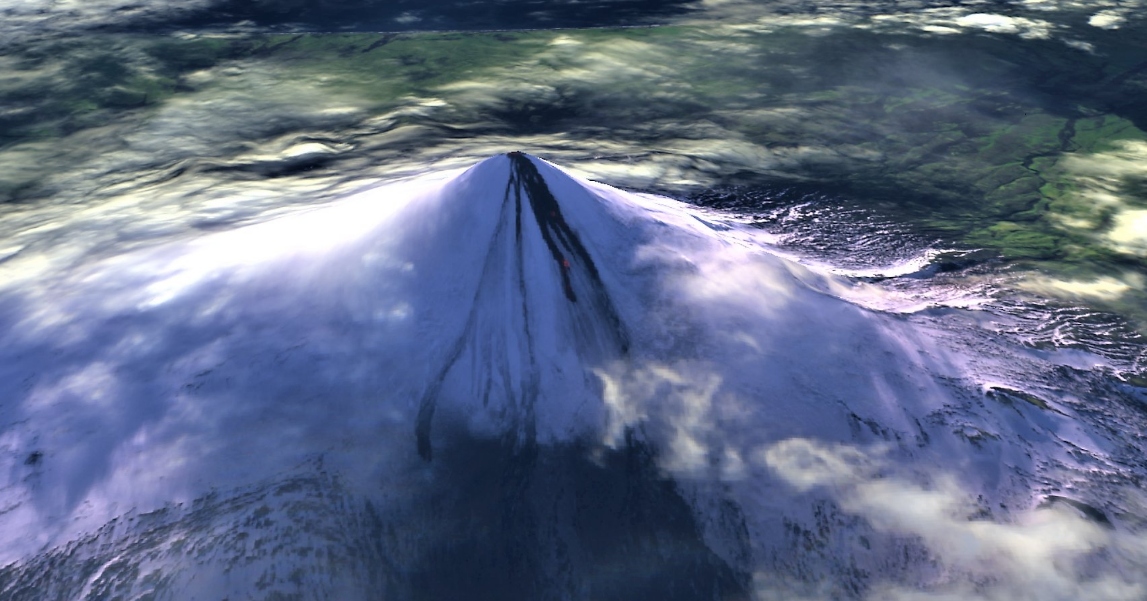
Shishaldin on November 8, 2019. Credit: ESA/Sentinel-2, Antonio Vecoli
Geological summary
The beautifully symmetrical volcano of Shishaldin is the highest and one of the most active volcanoes of the Aleutian Islands. The 2857-m-high (9 379 feet), glacier-covered volcano is the westernmost of three large stratovolcanoes along an E-W line in the eastern half of Unimak Island.
The Aleuts named the volcano Sisquk, meaning "mountain which points the way when I am lost." A steady steam plume rises from its small summit crater. Constructed atop an older glacially dissected volcano, it is Holocene in age and largely basaltic in composition.
Remnants of an older ancestral volcano are exposed on the west and NE sides at 1 500 -1 800 m (4 920 – 5 900 feet) elevation. There are over two dozen pyroclastic cones on its NW flank, which is blanketed by massive aa lava flows.
Frequent explosive activity, primarily consisting of strombolian ash eruptions from the small summit crater, but sometimes producing lava flows, has been recorded since the 18th century. (GVP)
Featured image: Shishaldin on November 11, 2019. Credit: ESA/Sentinel-2, Anamaria Luongo

Commenting rules and guidelines
We value the thoughts and opinions of our readers and welcome healthy discussions on our website. In order to maintain a respectful and positive community, we ask that all commenters follow these rules.